Two things stand out immediately with the Ortovox S1. First, it is super intuitive to use, and yet, it is also rather sophisticated.
To turn it on you twist the knob on the right side of the clamshell case that it opens around. That puts the S1 into transmit mode. First it does a self-check and if all systems are good to go, it’ll beep three times shortly after you turn it on and begin transmitting a pulse every second or so.
If you’re just heading out from a trailhead, all you need to do next is stuff it inside the pouch and hang the harness off your shoulder and clip the waist strap around your torso.
To begin searching, open it up like a flip phone. Now you’re ready to notice how sophisticated the S1 is. Whereas all modern digital beacons can tell you how far away, and in what direction a signal is coming from, they can only tell you about one signal at a time.
The Sophisticated One, thanks to a graticle display and some amazing software can not only tell you distance and direction for a single beacon, but can show the relative positions, distances and directions of up to three at a time, four on a good day (er, if you’re practicing that’s a good thing, if you’re searching for four buried people that would actually be a really bad day). If you’re far enough away that no signal is detected, the S1 shows a little man zig-zagging to indicate what you should do until you pick up a signal.
As with all technology there are limits, starting with how far away a signal can first be picked up.
Ortovox’ S1 typically yields a max range of 48 meters when the transmit and receive antennas are optimally coupled (parallel spatial orientation). This drops to a mere 35 meters for less coupled positioning (both horizontal, but orthogonal), and a meager 20 meters when the transmit antenna is vertical. In practical terms this means the S1 can pick up a signal pretty far away, but depending on the orientation of the transmitting signal(s), it might not recognize the total number of victims until they are all within 20 meters, but usually around 30.Before I head down the multiple victim capabilities of the sophisticated one, let me finish explaining how it works with just one. Once the S1 latches on to a signal you simply move in the direction it indicates as long as the distance numbers beneath the victim icon continue to get smaller. If they’re actually getting larger, the S1 will indicate you should turn around by placing the victim icon under the horizontal axis of the display, meaning either you went past it, or you’re getting further away.
As long as the S1 is receiving the signal it beeps about once a second, in time with the signal being transmitted by the victims beacon. When you get closer than 10 meters those beeps will start coming faster. Inside of three meters the display changes from a graticle display to a circle that gets smaller as you get closer, with numbers to indicate distance away while the beeps simultaneously start occurring faster, and louder. If you go past the minimum point, the circle will get bigger, with a residual smaller circle to help alert you to the fact you went past the closest point.One note of caution here. Slooooowwwww down — if you move too fast the display will indicate where you were 1-2 pulses ago, not now. I recommend two pulses per reading when you’re in close for accuracy. From the closest point you should probe to verify the location of the victim and THEN you can “mark” the signal as found by pressing the upper membrane key.
The marking function of the S1 is hands down the best there is because of the number of ways the Sophisticated One characterizes each signal. Most digital beacons that can recognize multiple signals and mark each when found do so by keeping track of the timing, amplitude, and frequency of the signals. When there are lots of victims, the timing of the signals can get muddled because of signal overlap. To help distinguish each one no matter what, the S1 also senses how long each pulse is on, the shape of the pulse, and the spatial orientation of the flux line. So when the S1 “marks” a signal, it has a much better idea of exactly what signal it is marking than any other beacon on the market. That’s the good news. The bad news is that, when there are three or more signals within range the odds are low but annoyingly more common than I find acceptable that the S1 will get confused by all the things it is trying to keep track of and ask you to “halt” while it sorts things out. If there weren’t lives at stake, I could accept that, but there are, so I can’t. You can put the S1 in a special receive mode, called 4+ mode, which limits the number of signals it tries to keep track of to only three so it won’t get confused and you can focus on finding each victim in succession. But will you remember how to do that in a real situation when you’re freaking out because not just one, but several of your friends were caught and buried? I doubt it.To be more realistic, theoretically you’ll never use the S1 except to practice with and in the rare circumstance that you really do need to search for someone, it will only be one person, two at the most, in which case the S1 simply rocks. All beacons that purport to help with multiple victims can get their brains scrambled with three or more, but the S1 seems more prone than its capabilities would suggest.
The solution is to not expect so much from an electronic widget in what is certain to be a worst case scenario. Better to have a back up plan that is immune to programming glitches, like knowing how to use the micro-grid search technique to find more than two victims reliably and quickly.The other thing to keep in mind, aside from the no-win scenario of more than three buried victims, is one of the beauties of the S1 is the graticle display so that in the more probable situation of two, maybe three (hopefully just two) victims the S1 does a darn good job of not only homing in on the strongest signal, and reliably marking it, but as you get close you will have a solid idea of the approximate location of the other victims. Provided you’re not the only one in the rescue party, you can help direct others in the search for the additional victims with reasonable accuracy which will definitely save time, maybe even help to save more than one alive.
It is to this possibility that the S1 has been optimized and if you’re a boy scout at heart and want to be prepared, even for the worst possible situation, the S1 is the beacon for you. Just remember that for multiple victim scenarios practice is mandatory, even with the S1.
Ortovox
S1
MSRP: $459
Weight:
3 antenna, graticle display.
Uses 3 AAA batteries
© 2012

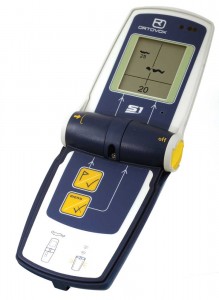
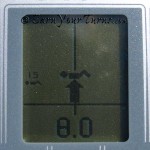
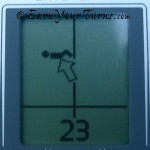
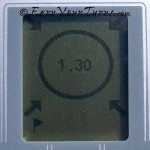
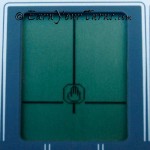
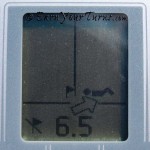
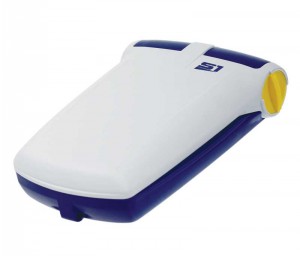
2 pings
[…] a time Ortovox’s S1 avalanche transceiver could measure slope angle and, of course, there is a smart phone app for that […]
[…] a time Ortovox’s S1 avalanche transceiver could measure slope angle and, of course, there is a smart phone app for that […]